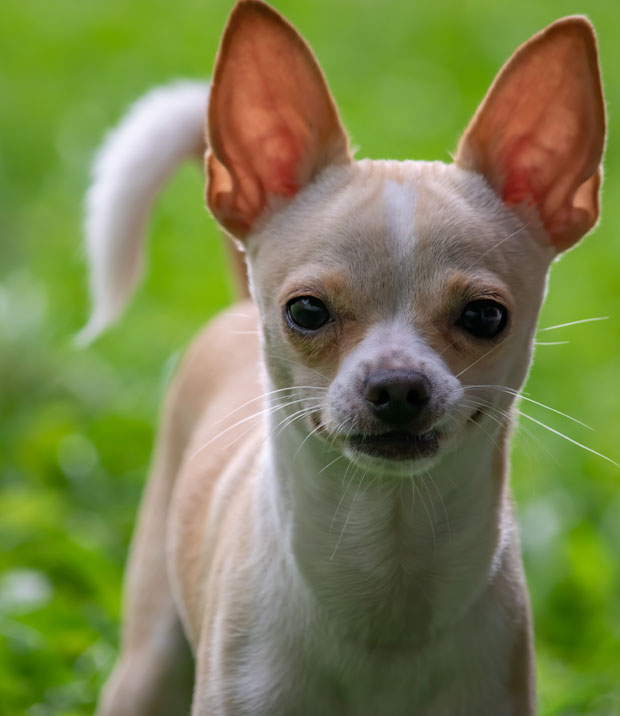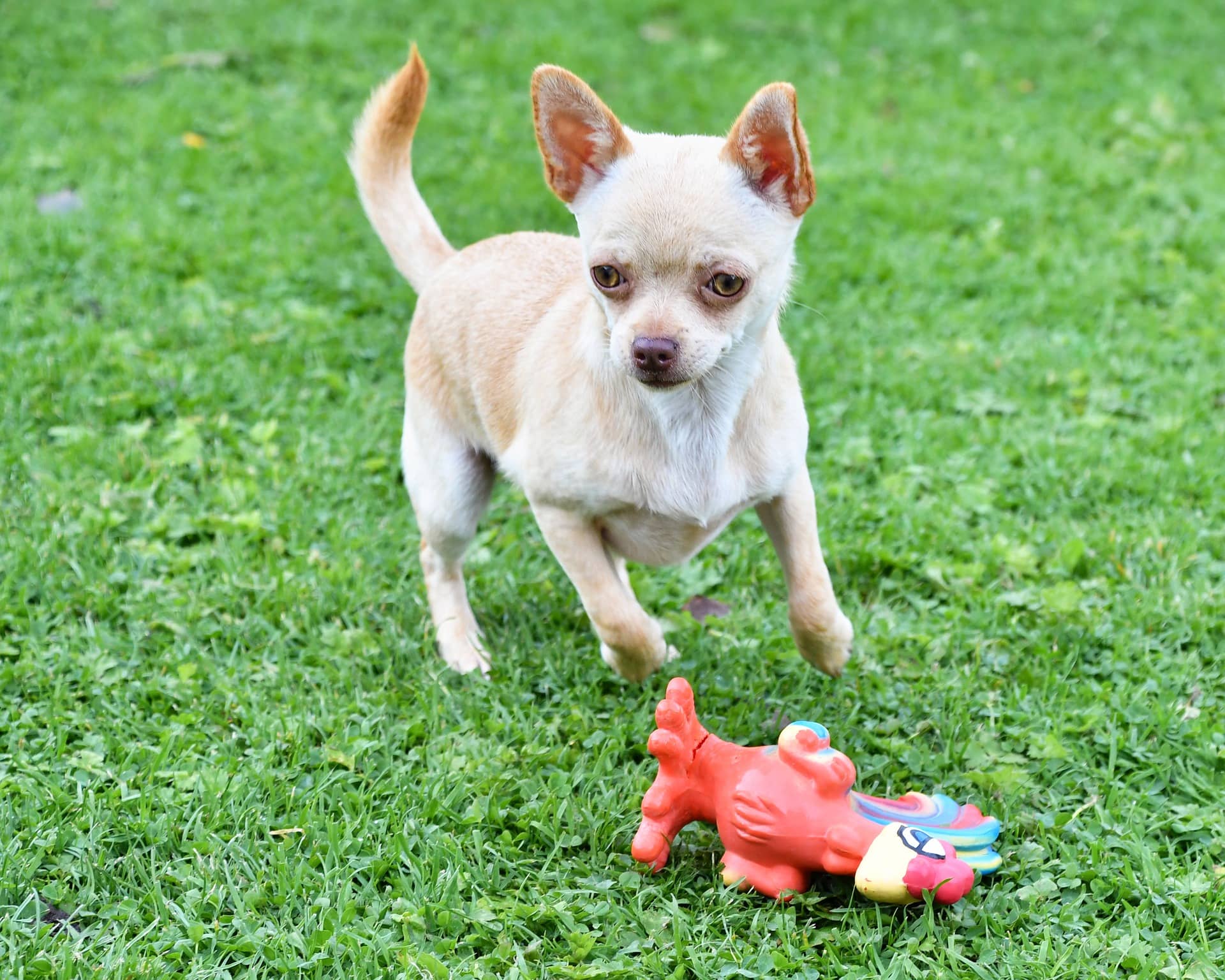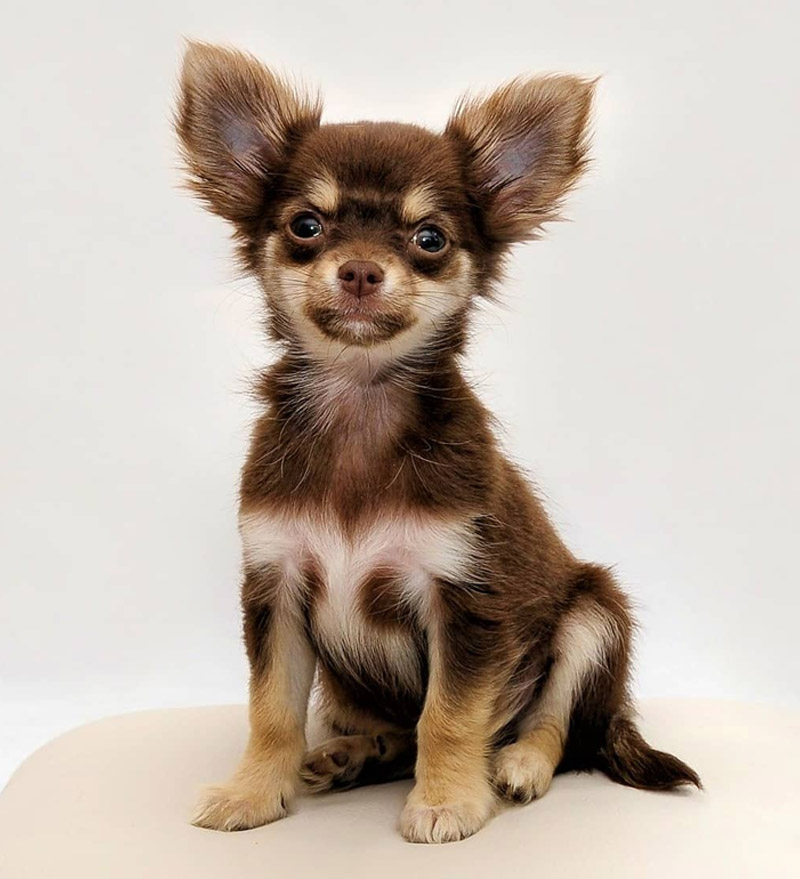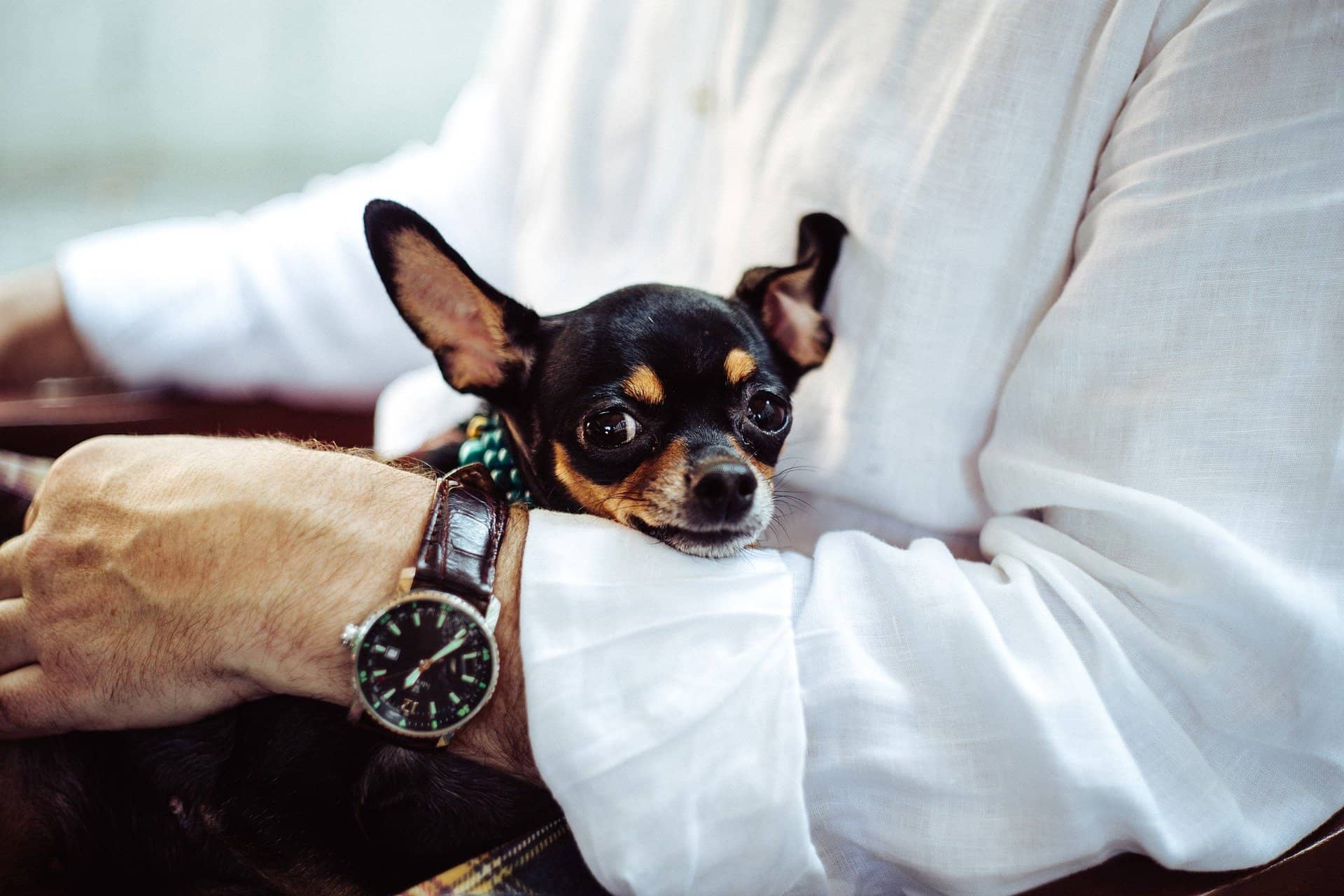Are you thinking about getting a pet Chihuahua? This breed is a favourite of many people for their cute pocket size and large personalities! In today’s article, we’ll give tips on training a Chihuahua and some general information about the breed. As with any new dog, Chihuahua training is critical, so hopefully, these tips will help you acquire a lifelong friend.
Caring for Chihuahua
The Chihuahua is part of the ‘Toy breed group’ and can wear short or long smooth coats. However, even the longer-coated ones only need just a little grooming. In fact, the Kennel Club suggests once a week is more than enough. This makes them fairly easy to keep clean and healthy. It’s also safe to say that, frankly, Chihuahuas are inexpensive to upkeep due to their small food intake.
The character of Chihuahua
Chihuahuas love their owner’s attention and make great lap dogs. They are keen on fun exercise activities as well. They can be cuddly and quiet yet fun-loving and bold all at the same time. The love of being close to their owner means most do not stray far, even when out and about, always following behind their owner.
This breed could be perfect for a first-time dog owner as long as the owner is aware of the possible difficulty with house training. They are easy to handle when on the lead, but consistent training and leadership are needed, like for all dogs. Chihuahuas are intelligent and love to be mentally stimulated, which makes them fun to mess around with.
This breed can be nervous in new situations. This can include hearing sudden noises, meeting bigger dogs and people, overcrowded environments. So, it’s best that Chihuahuas are socialised from a young age to encourage them to become confident in various situations. Furthermore, Chihuahuas are fragile due to their small size, so it can be difficult to socialise with bigger dogs due to the risk of them being hurt.
They can live in a small flat or house as they don’t need as much space as larger breeds, although they still need regular exercise and stimulation, especially as they can put on weight quickly. This puts an unnecessary load on their tiny legs, which may result in traumas.
Chihuahua is more of a ‘one person dog’ than a dog for the whole family. And unfortunately, can become worried around children if not introduced from a young age. This breed isn’t ideal for a very young family with small children as the dogs are fragile and can be unsure of louder noises which might result in rough handling.
Due to their small size, this breed can accompany the owner in many different situations. Which makes them a great companion as they are easy to take in the car, on public transport and don’t even take up much space in the office!
Most Chihuahuas love food, so this desire can be efficiently utilised for training. However, it’s important to ensure their treats are an appropriate size as they can quickly become overweight from over-indulgence.

How to Train a Chihuahua: Top Tips
Chihuahuas make an excellent pet for many people, especially if you don’t have the time or space for big, super-boisterous breeds. However, it’s essential not to neglect Chihuahua training if you want your dog to grow up well-behaved.
They can be difficult to house train
Like many toy breeds, Chihuahuas can be difficult to house-train. It may be helpful to have a crate for your Chihuahua at night and when unsupervised to prevent accidents all over the house. The crate does not need to be very big. The bigger the crate, the larger the path a puppy has to go out of its bed to reach the toilet. As most dogs do not like going to the toilet where they sleep, having a suitable size crate will make house training easier. It’s best to take them out frequently to the garden rather than having puppy pads all over the house. Being so small, Chihuahuas need to go to the toilet rather often because their tiny bladders cannot hold much.
Chihuahuas are very alert
Chihuahuas are extremely alert and observant, so it’s common to bark at anything that seems different or new. It may be useful to teach a ‘quiet’ command and a good recall so you can stop this before it gets out of control. To help acclimate your Chihuahua to different environments and noises, they should be introduced and familiarised slowly, preferably from a young age. If a dog is exposed to different environments when younger, it has a much better chance of being a stable and confident adult.

Don’t be fooled by their size! They have lots of energy
Chihuahuas have lots of energy despite their tiny size. So, agility training can be excellent for this breed, especially for their confidence. They love to run and jump around, so starting with a few low jumps and equipment at home can help their focus and engagement with you. However, it’s important to note that many behavioural issues usually stem from a lack of exercise, so it’s essential they are physically and mentally stimulated.
Practice nose touches with your dog
This breed can be wary of new people coming towards them and putting their hands out to stroke them. Because of their small size, everything around them can be imitating and scary for them. Their natural cautiousness can make them suspicious and skittish around strangers, so it’s important to work on this as early as possible. A great exercise to teach them is a nose touch to your hand to help build a positive association of people putting their hands out. This needs to be practised in low-distraction environments. Once it’s a solid behaviour, it can then be practised around new people.
Let this breed explore naturally
Due to their small size, it’s prevalent for owners to pick their Chihuahua up and carry them around. So, remember that, like every dog, they want to explore nature and learn to walk outside and go to the toilet independently. This is important because they need to understand that they need to go to the toilet by themselves rather than waiting to be picked up.
How to train a Chihuahua to get along with bigger breeds?
With smaller breeds, they must learn to be around bigger dogs and ones their size. For example, many Chihuahuas are unsure of bigger dogs which can lead to them running up and barking at the dog or running away scared. Therefore, it’s valuable to teach them to be able to walk confidently past a bigger dog on the lead and also how to interact when meeting.
As mentioned before, the easiest way is to start as young as possible and let them socialise with bigger dogs rather than over-worrying about their size. As long as the bigger dog is calm and behaves appropriately towards smaller dogs, you can allow them to interact and play confidently. However, suppose your dog is older and has specific negative associations with bigger dogs. In that case, it may take some time, working slowly, from a distance, and building new positive associations with a training plan.

Lots of games are key with Chihuahua training
Small flirt poles can be great to play and interact with when dragged and moved around on the floor, the same as small balls on a string. By encouraging your Chihuahua to play with different toys, you introduce your dog to new environments and can utilise it as a reward in training. Allowing a puppy to play with various toys will also improve their confidence and adaptability around different objects as they age.
Reward your dog for calm behaviour
Chihuahuas are naturally nervous dogs, so it’s essential for your dog to feel safe and secure when out. When introducing them to new situations, pay attention to their body language, if they seem stressed, remove them from the situation. Also, provide safety for them (a choice to move away) and reward them for calm behaviour. If they come out of a situation feeling stressed and uneasy (especially as puppies), they will start building up negative associations and lose confidence. So, it’s important to do this gradually and try to make scary situations rewarding with lots of verbal praise, encouragement, and rewards.
Nervous aggression is common in Chihuahuas, but good training can help overcome this, as you can see from this video with Teddy, a Chihuahua who came to Royvon!
It’s common for them to pull on the lead
It’s not uncommon for Chihuahuas to pull on the lead if they are not properly taught how to walk with a loose lead. For Chihuahuas, this is an important skill to master, as constantly pulling on the lead can cause damage to their small and sensitive necks. When teaching loose lead walking, it may be a good idea to have a harness and start by rewarding them for being by your side, even when at home! The first step is simply building the association that good things happen when they are by your side. By starting indoors, they are less likely to pull, so you can take the opportunity to heavily reinforce the good behaviour and gradually move outside to different environments.
Teach them how to relax on their own when left
As Chihuahuas love companionship and are very loyal to their owners, many wonder how to train a Chihuahua to be okay on their own. If unable to cope alone and stressed, they can toilet indoors, bark and become destructive. We can’t stress this enough: training at a young age, reinforcing good manners and gradually getting them used to being left alone for short periods of time is critical. Keep in mind that when leaving your dog, it’s best for them to be tired. So, making sure they are walked before will help them settle down, so you can leave confidently.
Your Content Goes Here
Bring your Chihuahua to train at Royvon
Here at Royvon, we have over 60 years of experience in the dog training world. We love using our knowledge to train dogs of all breeds, including Chihuahuas! If you’d like to learn more about what we offer, check out our residential Chihuahua dog training programme now!





Leave A Comment